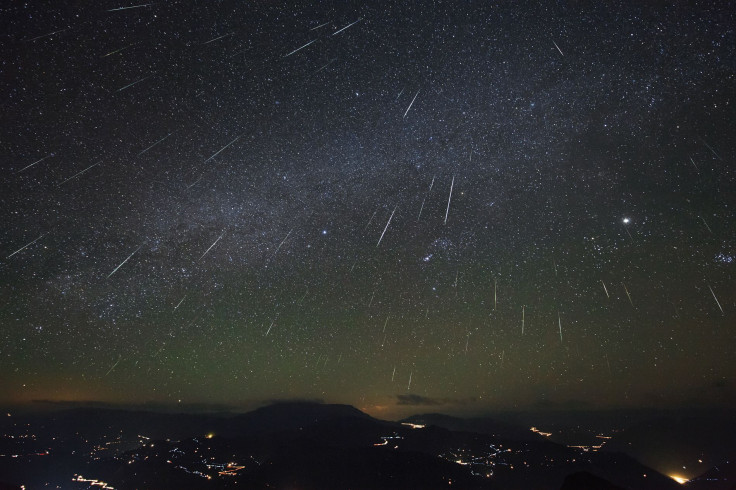Geminids Meteor Showers 2017, Where They Come From, How To See Them

The best meteor shower of the year is here. The Geminids will peak Wednesday night into Thursday morning for those in the Northern Hemisphere looking for a good view of some shooting stars.
Normally, the Perseids meteor shower that takes place over the summer is the best one of the year, but there was bright moonlight that made them difficult to see this year, making the Geminids the best shower, according to NASA. Luckily for the night of Geminids viewing, the moon won’t rise until 3 a.m. or so. On Wednesday evening and into early Thursday morning the meteors will be falling at a rate of about one per hour. This frequent rate can be seen between 7:30 p.m. on Wednesday until dawn on Thursday, according to NASA. Viewers in the Northern Hemisphere will have a better chance at viewing the shower because the radiant, or where the meteors appear to come from, will be lower in the sky in the Southern Hemisphere.
The meteors will also be visible on the nights prior to, and following, the peak evening but they will be less frequent. NASA suggests that any night you head out to catch a meteor shower, that you get away from light pollution, so if you’re in a city head to the suburbs. You’ll also want to make sure you give yourself enough time for your eyes to adjust to the dark. The meteors will look like they’re coming from all over the sky, so try to get as wide a view as possible and look straight up.
"When you see a meteor, try to trace it backwards," Bill Cooke of NASA’s Meteoroid Environment Office said, according to NASA, "If you end up in the constellation Gemini there's a good chance you've seen a Geminid."
The Geminids appear to originate from the constellation Gemini, this is called the radiant. The meteor really come from the rocky space object called Phaethon. When the Earth passes through the trail left by Phaethon, the dust and debris it leaves behind appear as shooting stars as they burn up in the atmosphere of Earth.
Astronomers aren’t exactly sure what Phaethon is though. It could either be a near-Earth asteroid or a dead comet, but there’s no consensus about what it is, according to NASA. A dead comet is the spent rock at the center of a comet that’s ice has all been lost. Whatever it is, it will pass closer to Earth this December than it has since 1983. On this close approach, astronomers might be able to better observe and identify what 3200 Phaethon is.
If you can't get outside, following along online at NASA's Fireball website.
© Copyright IBTimes 2024. All rights reserved.











